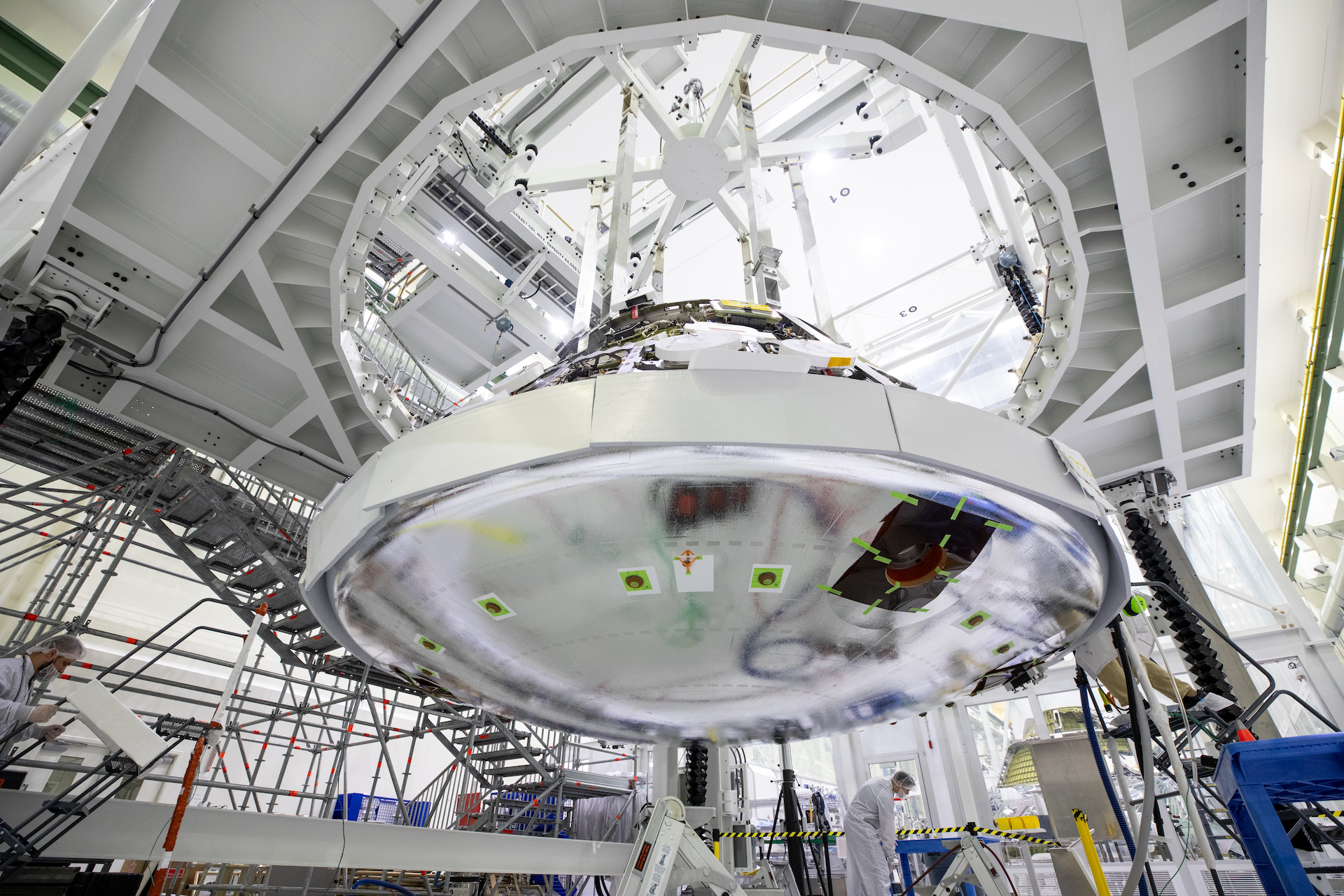Orion spacecraft gets its heat shield for Artemis 2 moon mission (photo)
Artemis 2's Orion capsule now has a thermal protection system.

NASA is making headway in its preparations for the Artemis 2 mission, which will send astronauts on a mission around the moon.
Technicians at NASA's Kennedy Space Center (KSC) in Florida have attached the heat shield to the Artemis 2 Orion spacecraft.
Orion and its four-person crew are scheduled to launch atop NASA's Space Launch System (SLS) rocket on Artemis 2 in late 2024. The mission will carry them into deep space around the moon, farther than any human has ever flown.
Related: Watch NASA assemble the massive Artemis 2 rocket that will take humans back to the moon (video)
In November 2022, an uncrewed Orion capsule launched on Artemis 1, a 25-day trip to lunar orbit and back. Artemis 2 will employ a free-return trajectory profile, which forgoes an orbital injection burn at the moon and puts the spacecraft on a path back to Earth. So, the Artemis 2 crew will fly around the moon without actually entering its orbit.
Once Orion completes its lunar pass, the Artemis 2 crew will be on a course back to our big, blue marble, with nothing but Earth's atmosphere standing between them and the slow parachuted drop of a safe ocean splashdown. To protect the spacecraft and its astronaut crew as Orion punches through Earth's gaseous outer shell, its heat shield measures 16.5 feet (5 meters) in diameter, and covers the entire bottom of the vehicle.
As it returns from the moon, Orion will hit the atmosphere traveling more than 25,000 mph (40,230 kph). Temperatures on the capsule's exterior will get as high as 5,000 degrees Fahrenheit (2,760 degrees Celsius). Orion's heat shield will absorb the majority of that energy, enabling the cabin inside to remain at comfortable temperatures during the astronauts' fall back to Earth.
Breaking space news, the latest updates on rocket launches, skywatching events and more!
Teams completed the Artemis 2 heat shield installation on June 25, inside the Neil Armstrong Operations and Checkout Building at KSC, according to NASA. Next, Orion's outer paneling will be secured and the spacecraft prepared for acoustic testing.
Orion has additional hardware installations and vehicle qualifications to endure before it is declared space-worthy, however. NASA is currently targeting the end of 2024 for the launch of Artemis 2, which will fly humans to the moon for the first time since the Apollo program ended more than 50 years ago.

Josh Dinner is the Staff Writer for Spaceflight at Space.com. He is a writer and photographer with a passion for science and space exploration, and has been working the space beat since 2016. Josh has covered the evolution of NASA's commercial spaceflight partnerships and crewed missions from the Space Coast, as well as NASA science missions and more. He also enjoys building 1:144-scale model rockets and human-flown spacecraft. Find some of Josh's launch photography on Instagram and his website, and follow him on X, where he mostly posts in haiku.
